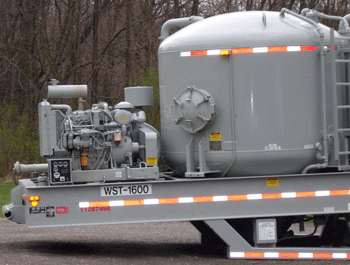Chemicals
From Wikimarcellus
The chemicals used in drilling fluid for hydro-fracturing are mostly non-toxic. In any event, they consist of less than 1/2 of 1% of the fluid. Most of it is made up of water and sand.
However, there are also examples of chemicals reported to have been used that are toxins and/or carcinogens. These include benzene, toluene, ethyl benzene and xylene. Their use obviously may raise public concern. For example, benzene is extremely dangerous in concentrations as small as one part per million. It is a known carcinogen.
When water samples are analyzed from well water or other sources, signs that they may be tainted with fracing fluid chemicals include unusual readings on:
- alkalinity
- aluminum
- barium
- calcium
- iron
- hardness
- manganese
- pH
- potassium
- specific conductivity
- sodium
- total dissolved solids.
The 2005 Energy Policy Act clarified that hydro-fracturing was never regulated under the Safe Drinking Water Act of 1974 (SDWA), and drilling companies have not been required to disclose the ingredients used to frac gas wells under SDWA. However, individual states have heavily regulated fracturing activities for decades. Frac chemicals have always been a matter for state regulation, and very few, if any, examples of drinking water contamination have ever been reported. That is not to say contamination issues never exist, yet rather appear quite minimal despite any environmental concerns to the contrary.
Resources
PA Dept. of Environmental Protection (DEP), Summary of Hydraulic Fracture Solutions.


